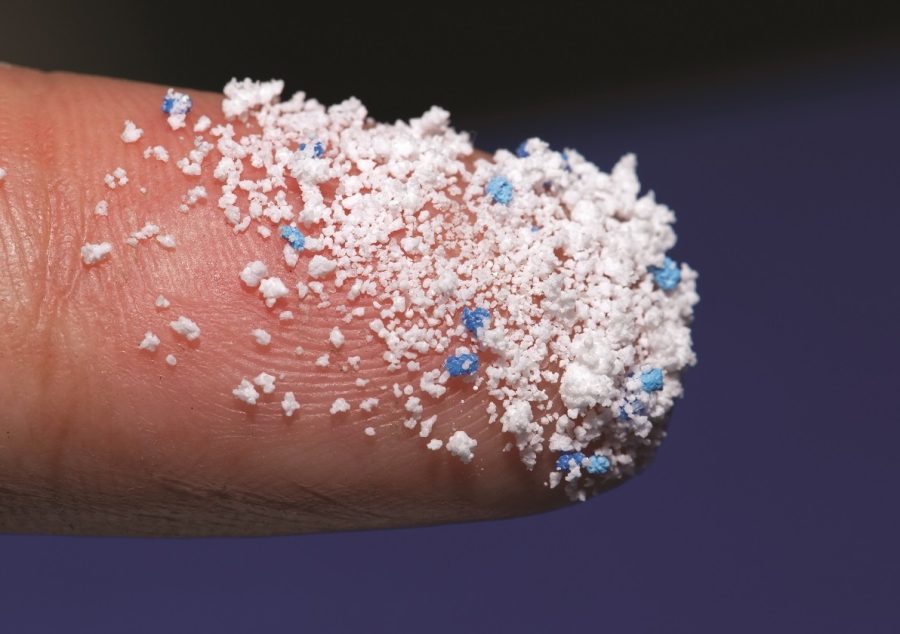Microplastics Found in Human Bloodstream for the First Time
Small Plastic pellets on the finger.Micro plastic.air pollution
May 10, 2022
It’s no hidden fact that plastics are found everywhere—oceans, landfills, and even our own Tenakill Brook. But recently, scientists have made a breakthrough discovery on plastics: they were found in the human bloodstream.
These particles are known as microplastics, which are fragments of plastic less than five mm in size that originate from the breakdown of plastics. People ingest microplastics all the time without realizing, via breathing, eating, drinking, or applying makeup and cosmetics. An analysis in 2019 revealed that humans take in microplastics roughly the size of a credit card every week. Yet it was unclear whether the particles remain in our system or not.
Dr. Kennedy, a biology and environmental science teacher at THS, explained how microplastics easily accumulate in our food chain. “You would get that from the food webs because we are the apex predators, so we eat other apex predators,” he said. “So the smaller animals lower in the food webs ingest microplastics; they ingest toxins as well as the plastics. So as the food web progresses… they are building up a concentration of microplastics in their body [and] toxins… This is called bioaccumulation.”
Recently, a paper published in Environmental International found microplastics in the blood of 17 out of 22 healthy adult participants, which is about 77%. Researchers found at least three different types of plastic. The most common particle found was PET, which most drink bottles are made from. They also discovered polystyrene, used to package food, and polyethylene, used to make plastic bags.
Research also shows that these particles can travel around the body, and in April, plastic particles were found lodged deep in the lungs of living people. This is alarming news since “microplastics cause damage to human cells in the laboratory and air pollution particles are already known to enter the body and cause millions of early deaths a year,” according to The Guardian. Dr. Kennedy added that the discovery of microplastics in the human bloodstream is a big deal for an obvious reason: they are “particles that shouldn’t be inside your body, floating around.”
The sample size of the study is too small to draw large conclusions, and currently the long-term effects of microplastics in the body are unknown. However, it is possible to assume that microplastics are harming our bodies, since many chemicals used in plastic production have been linked to health problems. “[Microplastics] have also been found in the placentas of pregnant women, and in pregnant rats they pass rapidly through the lungs into the hearts, brains and other organs of the [fetuses],” The Guardian reported.
All of this evidence points to a very grim future. “Our current environmental emergency has recently become a hot topic, quite literally,” Madison Situ (’22) said. “I try to not be a climate pessimist because many people fall down this rabbit hole that life is going to turn into a Don’t Look Up situation, but it’s important to understand that we all must work towards the good in taking action now—whether that be recycling, composting, eating less meat, or even voting.” Though ingesting microplastics is unavoidable, there are ways we can be mindful and eliminate as much plastic use as possible. We can utilize non-plastic products such as stainless steel, all-glass Tupperware, and stasher bags. “Although it may feel quite silly to revisit an elementary idea of the Three Rs, it is one of the most important parts in taking action on an individual level,” Situ said. “Reducing is the greatest aspect of the three Rs as it [prevents] overconsumption; directly after that is Reusing—in this case, [it] would be in regards to reusing what you already have. The latter [is] Recycling, which is key to diverting waste to landfills.”

















































































































































